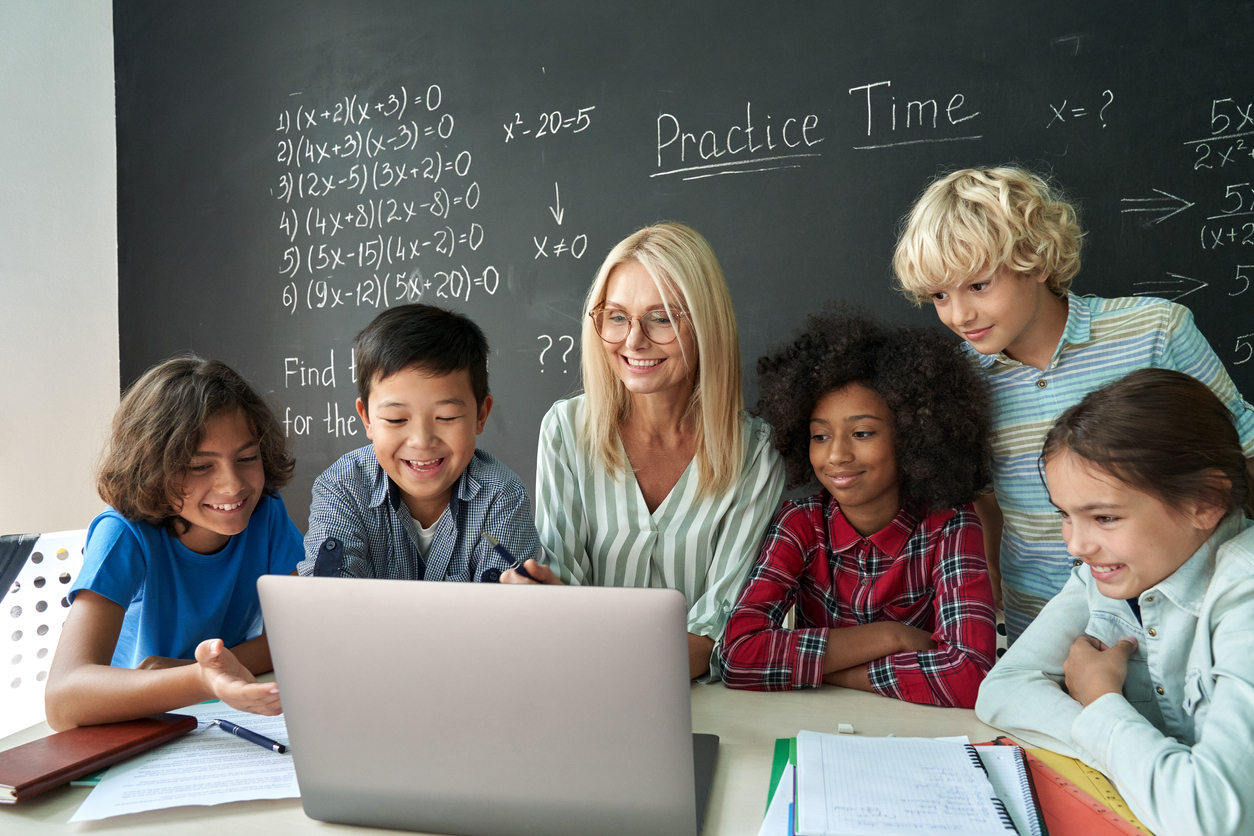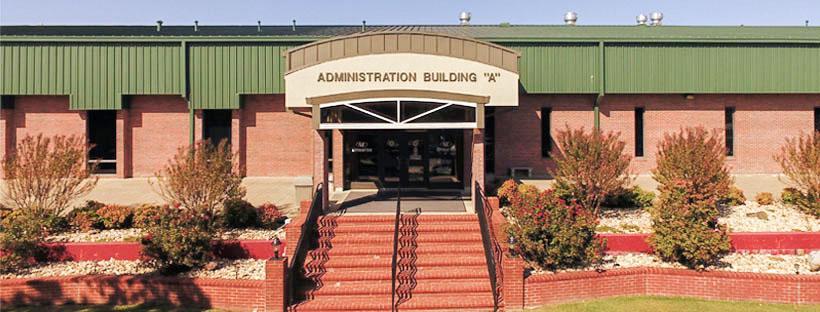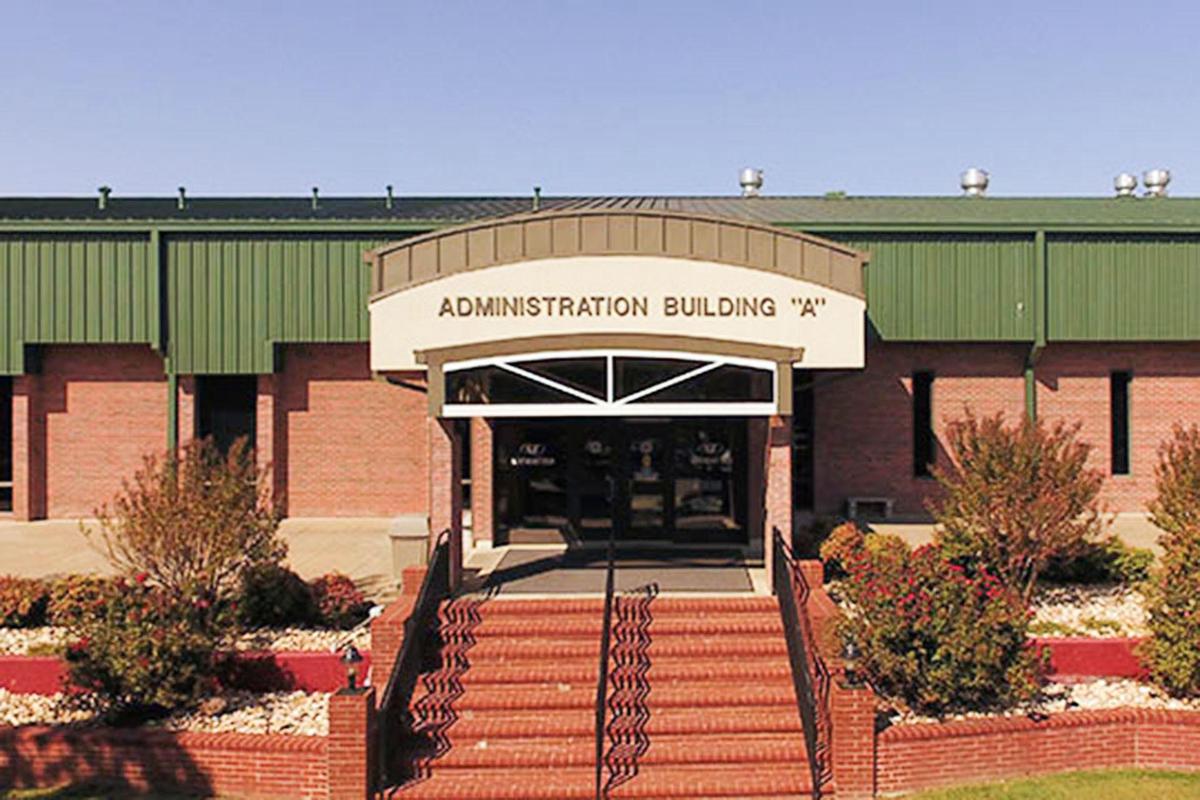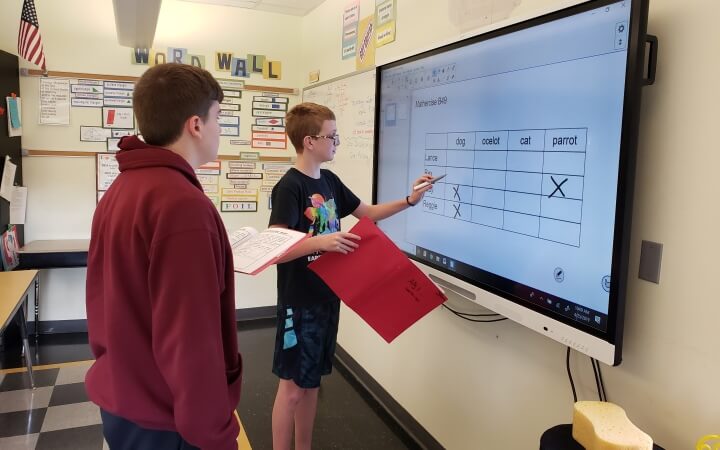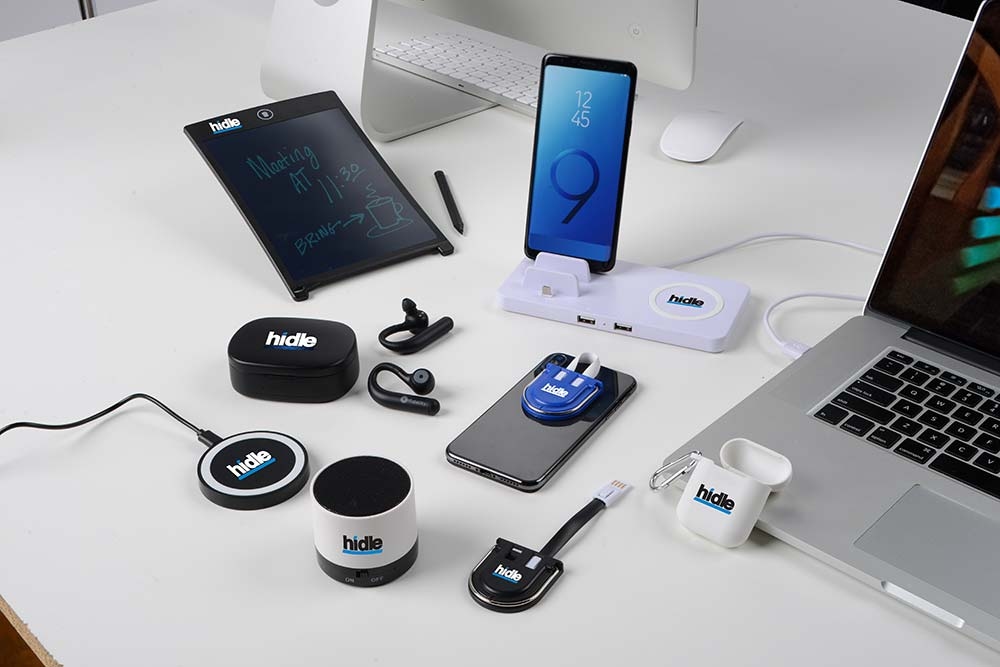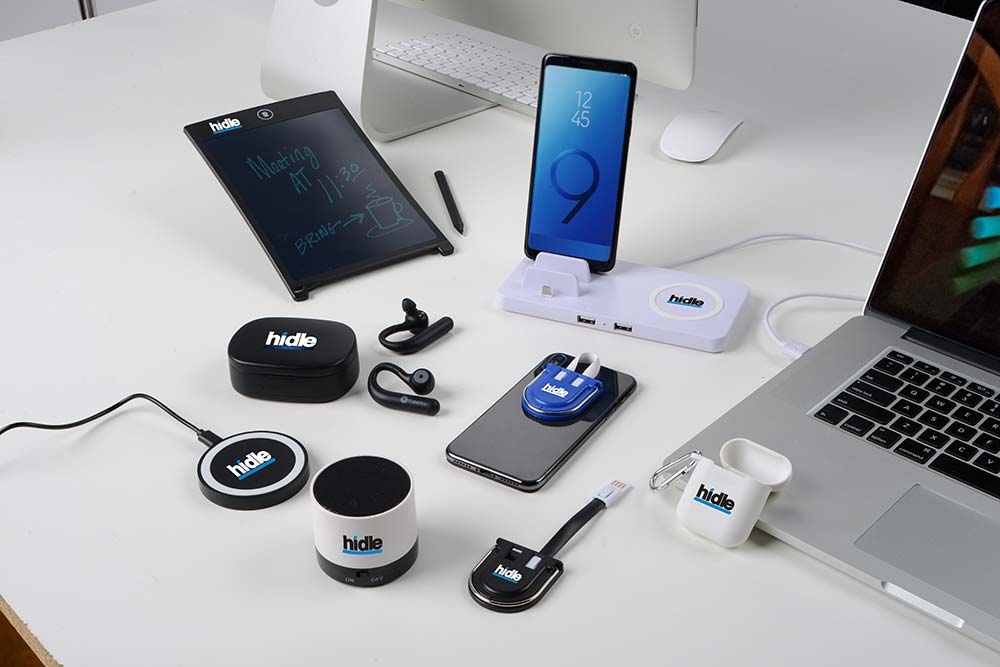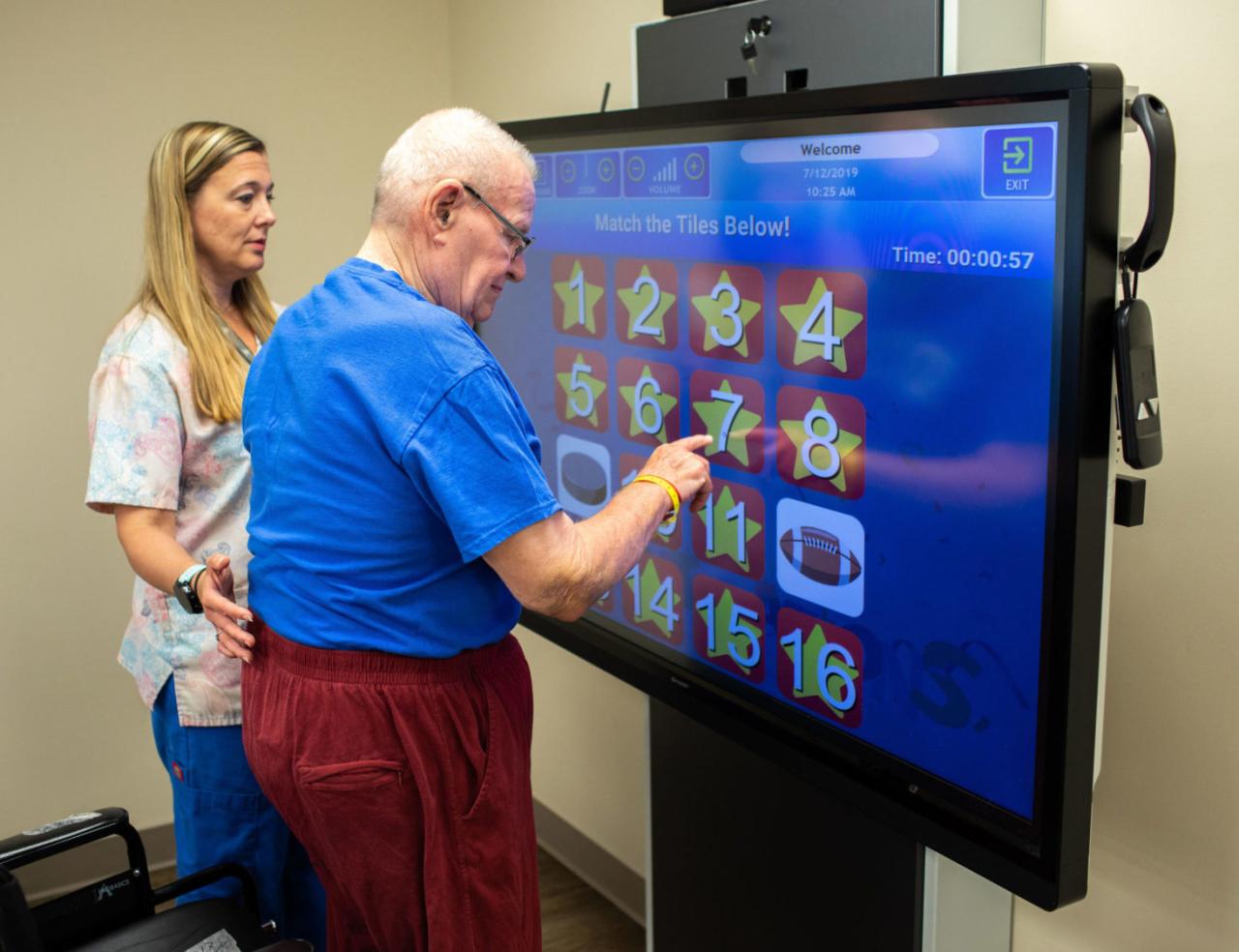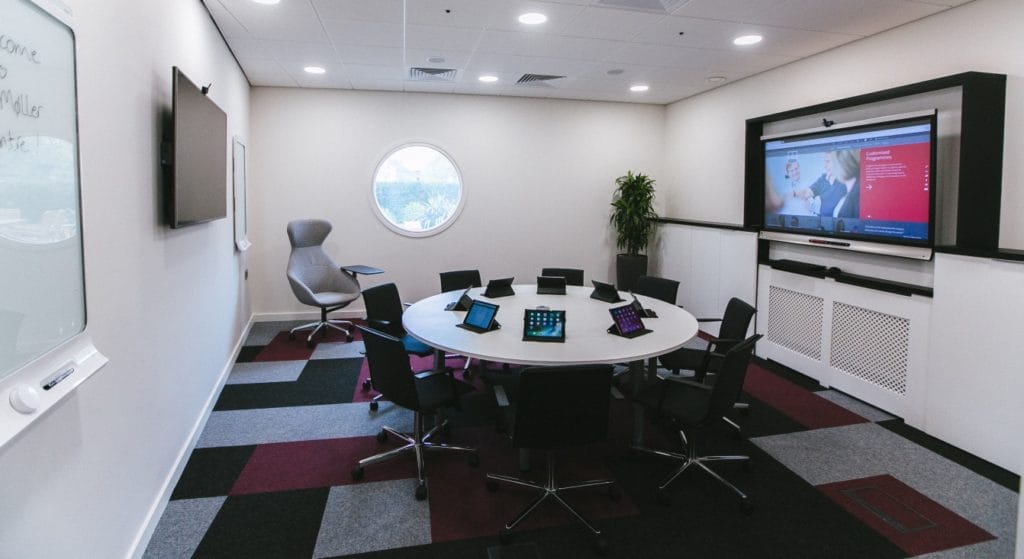Technology Lesson Plan: Integrating Technology in the Classroom
Technology Lesson Plan: Integrating Technology in the Classroom delves into the transformative potential of technology in modern education. This exploration goes beyond simply incorporating devices; it examines how to effectively […]

Technology Lesson Plan: Integrating Technology in the Classroom delves into the transformative potential of technology in modern education. This exploration goes beyond simply incorporating devices; it examines how to effectively leverage technology to enhance learning, engage students, and address the diverse needs of the 21st-century classroom.
From interactive whiteboards to online learning platforms, the landscape of educational technology is vast and constantly evolving. This guide provides educators with a comprehensive framework for understanding the benefits and challenges of technology integration, as well as practical strategies for designing engaging and effective lessons that harness the power of digital tools.
Defining Technology in the Classroom
Technology plays a crucial role in modern education, transforming the learning experience for both students and teachers. It offers a dynamic and interactive environment that can enhance engagement, personalize learning, and prepare students for the 21st-century workforce.
Integrating Technology into Lesson Plans
Technology can be seamlessly integrated into lesson plans in various ways, depending on the learning objectives and the age group of the students. Here are some common methods:
- Interactive Whiteboards: These large, touch-sensitive screens can display multimedia content, allowing teachers to create engaging presentations, conduct interactive quizzes, and facilitate real-time collaboration among students. They can also be used for online research, collaborative brainstorming, and even playing educational games.
- Online Learning Platforms: These platforms provide access to a wide range of educational resources, including online courses, interactive exercises, assessments, and virtual labs. They allow students to learn at their own pace and receive personalized feedback. Some popular examples include Khan Academy, Coursera, and Edmodo.
- Computers and Tablets: Computers and tablets offer students access to the internet, word processing software, presentation tools, and a vast array of educational apps. They can be used for research, writing assignments, creating multimedia projects, and engaging in online discussions.
- Virtual Reality (VR) and Augmented Reality (AR): VR and AR technologies are emerging as powerful tools for immersive learning experiences. VR allows students to explore virtual environments, such as historical sites or scientific experiments, while AR overlays digital information onto the real world, enhancing understanding of complex concepts.
Benefits of Using Technology in Education
Technology offers numerous benefits for both students and educators:
- Enhanced Engagement: Technology can make learning more engaging and interactive, keeping students motivated and actively participating in the learning process. Interactive simulations, games, and multimedia content can make complex concepts more accessible and enjoyable.
- Personalized Learning: Technology allows for personalized learning experiences, catering to the individual needs and learning styles of students. Online learning platforms, adaptive software, and personalized learning tools can adjust the pace and difficulty of instruction to meet each student’s unique requirements.
- Access to Global Resources: Technology provides access to a wealth of information and resources from around the world. Students can connect with experts, researchers, and other learners from diverse backgrounds, expanding their horizons and fostering global citizenship.
- Development of 21st-Century Skills: Technology helps students develop essential 21st-century skills such as critical thinking, problem-solving, communication, collaboration, and digital literacy. These skills are highly valued in the modern workforce and prepare students for success in a rapidly changing world.
Challenges of Using Technology in Education
While technology offers numerous benefits, it also presents some challenges that need to be addressed:
- Digital Divide: Unequal access to technology and internet connectivity can create a digital divide, hindering the learning opportunities of students from disadvantaged backgrounds. Ensuring equitable access to technology is crucial for promoting educational equity.
- Teacher Training and Support: Integrating technology effectively requires teachers to have adequate training and support. They need to be comfortable using technology in the classroom and know how to leverage its potential to enhance teaching and learning.
- Distractions and Misuse: Technology can be a source of distractions if not used responsibly. Students may be tempted to use technology for non-academic purposes, requiring clear guidelines and monitoring to ensure appropriate use.
- Cybersecurity and Privacy: Using technology in the classroom raises concerns about cybersecurity and student privacy. Schools need to implement robust security measures and educate students about responsible online behavior to protect their data and privacy.
Examples of Technology in the Classroom
Here are some examples of how different types of technology can be used in the classroom:
- Interactive Whiteboard: A teacher can use an interactive whiteboard to display a map of the world and have students identify different countries, continents, and geographic features. They can also use it to conduct interactive quizzes, allowing students to answer questions and receive immediate feedback.
- Online Learning Platform: A teacher can use an online learning platform to assign students online quizzes, provide access to educational videos, and track their progress. Students can use the platform to complete assignments, access online resources, and communicate with their teacher and classmates.
- Computers and Tablets: Students can use computers or tablets to research topics, write essays, create presentations, and collaborate on projects. They can also use them to access online learning resources, participate in virtual field trips, and engage in online discussions.
- Virtual Reality (VR): A history teacher can use VR to take students on a virtual tour of ancient Rome, allowing them to explore historical sites and interact with virtual characters. A science teacher can use VR to simulate a chemical reaction, allowing students to observe the process in a safe and immersive environment.
Technology Integration Strategies
Technology integration in education is not just about using technology for technology’s sake. It’s about using technology to enhance learning and make it more engaging and effective. There are various strategies and frameworks that can guide educators in integrating technology into their lesson plans.
The SAMR Model
The SAMR model, developed by Dr. Ruben Puentedura, provides a framework for understanding how technology can be integrated into teaching and learning. It suggests four levels of technology integration:
- Substitution: Technology is used as a direct replacement for traditional tools. For example, using a word processor instead of pen and paper for writing assignments. This level represents the most basic level of technology integration, where technology is simply used as a replacement for traditional tools.
- Augmentation: Technology is used to enhance existing tasks, providing more features or functionalities. For example, using a digital whiteboard to display images and diagrams during a lesson. This level involves using technology to enhance existing tasks, offering additional features or functionalities.
- Modification: Technology is used to alter or redesign learning tasks. For example, using a simulation to allow students to experiment with different scenarios. This level involves using technology to change or redesign learning tasks, creating new opportunities for student engagement and learning.
- Redefinition: Technology is used to create new learning experiences that were not possible before. For example, using virtual reality to allow students to explore historical sites. This level represents the highest level of technology integration, where technology is used to create entirely new learning experiences that were not possible before.
The TPACK Framework
The TPACK framework, developed by Dr. Michelle Koehler and Dr. Cathy Mishra, emphasizes the importance of understanding the interplay between technology, pedagogy, and content knowledge. It suggests that effective technology integration requires teachers to have a deep understanding of all three components:
- Technological Knowledge (TK): Understanding how to use technology effectively and knowing the capabilities and limitations of different technologies.
- Pedagogical Knowledge (PK): Understanding teaching and learning principles and how to design effective learning experiences.
- Content Knowledge (CK): Having a deep understanding of the subject matter being taught.
- Technological Pedagogical Content Knowledge (TPACK): The ability to integrate technology, pedagogy, and content knowledge in a meaningful way. This is the most complex and important aspect of TPACK, as it requires teachers to be able to connect technology, teaching, and content in a way that enhances student learning.
Designing a Lesson Plan with Technology
When designing a lesson plan that incorporates technology, it’s crucial to consider the following:
- Learning Objectives: What do you want students to learn? Technology should be used to support the achievement of these objectives, not just for the sake of using it.
- Student Engagement: How can technology be used to make the lesson more engaging and interactive for students? Technology can be used to provide students with opportunities to explore, create, and collaborate, making the learning process more dynamic and enjoyable.
- Accessibility: Is the technology accessible to all students? Ensure that the technology used is accessible to all students, regardless of their learning needs or disabilities.
- Assessment: How will you assess student learning? Technology can be used to create formative and summative assessments that provide students with immediate feedback and help teachers monitor their progress.
Choosing the Right Technology
The choice of technology should be guided by the learning objectives and the needs of the students. It’s important to consider the following factors:
- Purpose: What is the purpose of using technology in this lesson? The purpose of using technology should be clear and aligned with the learning objectives.
- Relevance: Is the technology relevant to the content and the learning objectives? The technology used should be relevant to the content and the learning objectives, and it should help students understand the material better.
- Ease of Use: Is the technology easy for students and teachers to use? The technology should be user-friendly and easy to learn, so that both teachers and students can use it effectively.
- Accessibility: Is the technology accessible to all students? The technology should be accessible to all students, regardless of their learning needs or disabilities.
Technology Tools and Resources
Technology tools and resources have become essential for educators in today’s digital world. They offer a wide range of possibilities for engaging students, enhancing learning experiences, and facilitating effective teaching practices. Understanding the different tools available and how to effectively integrate them into the classroom is crucial for educators.
Technology Tools and Resources for Educators
The availability of technology tools and resources for educators has revolutionized the way we teach and learn. These tools offer a vast array of possibilities for engaging students, enhancing learning experiences, and facilitating effective teaching practices.
Table of Technology Tools and Resources
| Tool Name | Description | Purpose | Example Usage |
|---|---|---|---|
| Google Classroom | A learning management system (LMS) that allows educators to create and manage assignments, communicate with students, and track their progress. | Streamlining classroom management, facilitating communication, and providing a centralized platform for learning materials. | Creating online quizzes, collecting assignments, and providing feedback to students. |
| Khan Academy | A non-profit educational organization that provides free online courses and exercises in a wide range of subjects. | Supplementing classroom instruction, providing personalized learning experiences, and addressing individual learning needs. | Using Khan Academy videos and exercises to reinforce math concepts or introduce new topics in science. |
| Quizlet | A website and app that allows users to create and study flashcards, practice quizzes, and learn new vocabulary. | Enhancing vocabulary learning, practicing concepts, and engaging students in interactive learning activities. | Creating flashcards for vocabulary words, practicing spelling quizzes, and reviewing key concepts. |
| Adobe Spark | A suite of graphic design tools that allows users to create professional-looking presentations, videos, and social media graphics. | Enhancing visual communication, creating engaging presentations, and fostering creativity in students. | Designing visually appealing presentations for class projects, creating short explainer videos for specific concepts, and designing social media graphics for classroom announcements. |
| Edpuzzle | A platform that allows educators to embed interactive elements, such as questions and quizzes, into videos. | Enhancing video engagement, assessing student understanding, and providing personalized feedback. | Adding interactive questions to educational videos to check student comprehension and provide immediate feedback. |
Free and Paid Technology Resources
- Free Resources:
- Google Classroom
- Khan Academy
- Quizlet
- Canva (basic version)
- Commonlit
- OpenStax (open textbooks)
- Paid Resources:
- Adobe Creative Cloud
- Flocabulary
- BrainPop
- Quizizz
- Nearpod
- Canva (Pro version)
Pros and Cons of Technology Tools and Resources
It’s important to consider the pros and cons of different technology tools and resources before integrating them into your classroom.
- Pros:
- Engaging and Interactive Learning Experiences: Technology tools can make learning more engaging and interactive for students. This can lead to increased motivation and better retention of information.
- Personalized Learning: Technology can help personalize learning experiences for individual students. This can help students learn at their own pace and address their specific learning needs.
- Accessibility: Technology can make learning more accessible for students with disabilities. This can help ensure that all students have equal opportunities to succeed.
- Collaboration and Communication: Technology tools can facilitate collaboration and communication among students and teachers. This can help students develop teamwork skills and enhance communication skills.
- Cons:
- Cost: Some technology tools and resources can be expensive. This can be a barrier for schools with limited budgets.
- Technical Issues: Technology can experience technical issues, which can disrupt learning. This can be frustrating for both students and teachers.
- Digital Divide: Not all students have equal access to technology. This can create a digital divide, which can disadvantage students from low-income families.
- Overreliance on Technology: Overreliance on technology can lead to a decline in traditional learning skills, such as critical thinking and problem-solving. It’s important to strike a balance between technology and traditional learning methods.
Technology-Enhanced Activities: Technology Lesson Plan
Technology can significantly enhance student engagement and learning by providing interactive and engaging experiences that go beyond traditional classroom methods. By incorporating technology, educators can create dynamic learning environments that cater to diverse learning styles and foster deeper understanding.
Interactive Simulations
Interactive simulations provide a safe and engaging environment for students to explore complex concepts and experiment with different variables. These simulations allow students to visualize abstract concepts, test hypotheses, and learn from their mistakes without real-world consequences.
For instance, in a science class, students can use interactive simulations to explore the effects of gravity on different objects or to model the process of photosynthesis. In a history class, students can participate in virtual simulations of historical events, such as the American Revolution or the signing of the Declaration of Independence.
Virtual Field Trips
Virtual field trips offer students the opportunity to explore locations and experiences that may be inaccessible or too expensive to visit in person. Through virtual reality (VR) or augmented reality (AR) technology, students can immerse themselves in different environments, such as visiting ancient ruins, exploring the depths of the ocean, or witnessing historical events firsthand.
For example, students can take a virtual field trip to the Great Wall of China, exploring its historical significance and architectural marvels without leaving the classroom. Or, they can virtually visit the Amazon rainforest, learning about its biodiversity and the challenges it faces.
Online Collaboration Tools
Online collaboration tools enable students to work together on projects, share ideas, and provide feedback in real-time, regardless of their physical location. These tools can foster communication, collaboration, and critical thinking skills among students.
Examples of online collaboration tools include Google Docs, Google Slides, and Microsoft Teams. Students can use these tools to create presentations, write reports, brainstorm ideas, and collaborate on projects.
Technology-Based Assessment Tools
Technology-based assessment tools provide educators with a range of options to evaluate student learning effectively. These tools can be used to assess student understanding, identify learning gaps, and provide personalized feedback.
Some examples of technology-based assessment tools include online quizzes, adaptive learning platforms, and digital portfolios. Online quizzes allow educators to assess student knowledge quickly and efficiently, while adaptive learning platforms provide personalized instruction and assessments based on student performance. Digital portfolios allow students to showcase their work and demonstrate their progress over time.
Addressing Technology Challenges
Integrating technology into the classroom can be a powerful tool for enhancing student learning, but it also presents unique challenges that educators need to address. These challenges can range from access to technology and technical difficulties to student digital literacy and ensuring responsible use.
Strategies for Overcoming Technology Challenges
Overcoming these challenges requires a proactive approach and a commitment to creating a supportive learning environment. Strategies for addressing these challenges include:
Providing Technology Training for Teachers and Students
Teachers and students need adequate training to effectively utilize technology in the classroom. This training should cover various aspects, including:
- Basic computer skills: Teachers and students should be comfortable with basic computer operations, such as navigating the operating system, using web browsers, and managing files.
- Software and application usage: Training should include using specific software applications relevant to the curriculum, such as word processing, spreadsheets, presentation software, and online learning platforms.
- Digital citizenship: This training emphasizes responsible online behavior, including ethical online interactions, protecting personal information, and avoiding cyberbullying.
- Troubleshooting and problem-solving: Teachers and students should be equipped to identify and resolve common technical issues, ensuring smooth technology integration.
Establishing Clear Technology Policies
Clear technology policies are crucial for creating a safe and productive learning environment. These policies should address:
- Acceptable use of technology: Defining acceptable online behavior, including appropriate content, respectful communication, and responsible use of school resources.
- Data privacy and security: Establishing guidelines for handling student data, protecting personal information, and ensuring responsible use of online platforms.
- Access and usage: Defining access levels, time limits, and appropriate use of technology resources, including school computers, tablets, and the internet.
- Consequences for misuse: Establishing clear consequences for violating technology policies, promoting accountability and responsible online behavior.
Promoting Digital Citizenship
Digital citizenship is essential for navigating the online world responsibly. Educators should emphasize:
- Online safety and security: Teaching students how to protect their personal information, identify online risks, and avoid phishing scams.
- Respectful online communication: Encouraging students to use respectful language, avoid cyberbullying, and understand the impact of their online actions.
- Copyright and intellectual property: Educating students about the importance of respecting copyright laws, citing sources properly, and avoiding plagiarism.
- Critical thinking and media literacy: Teaching students how to evaluate online information, identify biases, and understand the implications of digital media.
Checklist for Successful Technology Integration
To ensure a smooth and successful technology integration experience, educators should consider the following checklist:
- Assess technology access and resources: Determine the availability of technology devices, internet connectivity, and software applications for both teachers and students.
- Provide adequate technology training: Ensure that teachers and students receive appropriate training to effectively use technology tools and resources.
- Establish clear technology policies: Define acceptable use guidelines, data privacy protocols, and consequences for misuse.
- Plan for technical difficulties: Develop backup plans and troubleshooting strategies to address potential technical issues.
- Integrate technology strategically: Choose technology tools that align with learning objectives and enhance student engagement.
- Promote digital citizenship: Emphasize responsible online behavior, online safety, and ethical use of technology.
- Monitor and evaluate technology integration: Regularly assess the effectiveness of technology integration and make adjustments as needed.
Technology and Learning Styles
Technology offers a unique opportunity to cater to diverse learning styles, ensuring that every student has access to information and learning experiences that resonate with their individual preferences. By leveraging technology, educators can create a more inclusive and engaging learning environment that empowers all students to reach their full potential.
Technology for Visual Learners
Visual learners thrive on visual aids and representations. They often learn best through images, videos, diagrams, and other visual tools. Technology can be a powerful tool for visual learners by providing them with a wealth of resources to enhance their understanding and engagement.
- Interactive Whiteboards: Interactive whiteboards allow teachers to present information in a dynamic and engaging way, using images, videos, and animations to capture students’ attention and facilitate understanding.
- Educational Videos: Online platforms like YouTube and Khan Academy offer a vast library of educational videos that can explain complex concepts in a clear and concise manner, making it easier for visual learners to grasp information.
- Mind Mapping Software: Mind mapping software like MindNode and XMind allows students to visually organize their thoughts and ideas, creating a clear and concise representation of information that is easy to understand and remember.
Technology for Auditory Learners
Auditory learners prefer to learn through listening and auditory experiences. They often find it easier to understand and remember information when it is presented verbally or through audio recordings. Technology can help auditory learners by providing them with a variety of audio-based learning resources.
- Audiobooks: Audiobooks allow students to listen to books while they are on the go, making it easier for them to engage with the material in a way that suits their learning style. Platforms like Audible and Librivox offer a wide range of audiobooks for different age groups and interests.
- Podcasts: Educational podcasts offer a wealth of information on a variety of topics, delivered in an engaging and accessible format. Students can listen to podcasts while they commute, exercise, or relax, making learning a more integrated part of their daily lives.
- Speech-to-Text Software: Speech-to-text software like Dragon NaturallySpeaking allows students to dictate their thoughts and ideas, making it easier for them to express themselves and overcome challenges with writing.
Technology for Kinesthetic Learners
Kinesthetic learners learn best through hands-on experiences and physical activity. They often benefit from opportunities to move around, interact with objects, and engage in active learning activities. Technology can provide kinesthetic learners with a range of tools and resources that allow them to learn through movement and engagement.
- Virtual Reality (VR) and Augmented Reality (AR): VR and AR technologies offer immersive experiences that allow students to explore different environments and interact with objects in a virtual space, making learning more engaging and interactive.
- Interactive Games: Educational games like Minecraft and Kerbal Space Program allow students to learn through play, applying their knowledge in a fun and engaging way that encourages experimentation and problem-solving.
- Robotics Kits: Robotics kits allow students to build and program robots, providing them with a hands-on learning experience that combines technology, engineering, and problem-solving.
Technology for Tactile Learners
Tactile learners learn best through touch and physical manipulation. They often benefit from hands-on activities that allow them to interact with objects and materials. Technology can provide tactile learners with a variety of tools and resources that allow them to learn through touch and exploration.
- Interactive Touchscreens: Interactive touchscreens allow students to directly interact with digital content, providing a tactile experience that can enhance learning and engagement.
- 3D Printing: 3D printing allows students to create physical models of objects, providing them with a tactile understanding of concepts that can be difficult to grasp through traditional methods.
- Manipulatives: Online platforms like GeoGebra and Desmos offer interactive manipulatives that allow students to explore mathematical concepts and geometric shapes through physical manipulation.
Differentiation in a Technology-Rich Environment
Differentiation is essential in any learning environment, but it becomes even more critical in a technology-rich environment. Technology can amplify existing learning gaps, making it crucial to ensure that all students have access to the tools and resources they need to succeed.
- Personalized Learning Pathways: Technology allows educators to create personalized learning pathways that cater to the unique needs and interests of each student. Adaptive learning platforms can adjust the difficulty level of assignments based on individual student performance, ensuring that students are challenged and supported at the appropriate level.
- Universal Design for Learning (UDL): UDL principles can be applied to technology to create learning experiences that are accessible to all students, regardless of their learning style, abilities, or disabilities. This can involve using multimedia resources, providing alternative text formats, and incorporating assistive technologies.
- Flexible Learning Environments: Technology can create more flexible learning environments that allow students to learn at their own pace and in their own way. Students can access learning materials online, participate in virtual discussions, and complete assignments at times that are convenient for them.
Technology and Assessment

Technology has revolutionized the way we assess student learning, offering a wide range of tools and strategies that can enhance engagement, provide personalized feedback, and streamline the assessment process.
Engaging Assessment Methods
Technology empowers educators to create assessments that go beyond traditional paper-and-pencil tests.
- Online Quizzes: Online platforms allow for the creation of interactive quizzes with various question types, such as multiple choice, true/false, fill-in-the-blank, and short answer. This provides immediate feedback to students and allows for real-time tracking of progress.
- Interactive Simulations: Simulations offer a hands-on approach to assessment, allowing students to apply their knowledge in a virtual environment. For example, a science class might use a simulation to assess students’ understanding of a chemical reaction or a history class might use a simulation to assess students’ understanding of a battle strategy.
- Digital Portfolios: Digital portfolios provide a platform for students to showcase their work, demonstrating their skills and progress over time. These portfolios can include a variety of media, such as essays, presentations, videos, and artwork, allowing students to demonstrate their learning in a more holistic way.
Personalized Feedback and Learning Recommendations
Technology facilitates personalized learning by providing immediate feedback and tailored recommendations.
- Adaptive Learning Platforms: These platforms use algorithms to adjust the difficulty of learning materials based on student performance. They can identify areas where students need additional support and provide targeted practice exercises.
- Automated Grading Tools: Tools like Google Classroom and Gradescope can automate the grading of multiple-choice questions and short answer responses, freeing up teachers’ time to provide more personalized feedback on other aspects of student work.
Ethical Considerations in Technology-Based Assessment
While technology offers significant benefits for assessment, it’s crucial to consider ethical implications.
- Fairness: Ensure that all students have equal access to technology and the necessary skills to use it effectively.
- Accuracy: Validate the reliability and accuracy of technology-based assessment tools to prevent bias or errors in scoring.
- Privacy: Protect student data and ensure that assessments are conducted in a way that respects their privacy.
Technology and Professional Development
The integration of technology into the classroom is an ever-evolving process. To ensure educators can effectively utilize technology to enhance teaching and learning, ongoing professional development is crucial. It provides teachers with the knowledge, skills, and resources necessary to stay abreast of the latest trends and best practices in technology integration.
Resources and Strategies for Staying Up-to-Date, Technology lesson plan
Teachers can access various resources and strategies to stay informed about the latest trends and best practices in technology integration.
- Online Learning Platforms: Platforms like Coursera, edX, and FutureLearn offer numerous online courses and certifications on technology integration in education. These platforms provide flexible learning options, allowing educators to learn at their own pace and convenience.
- Professional Organizations: Organizations like the International Society for Technology in Education (ISTE) and the National Education Association (NEA) provide valuable resources, conferences, and networking opportunities for educators interested in technology integration. These organizations offer workshops, webinars, and publications that focus on current trends and best practices.
- Educational Technology Blogs and Websites: Numerous blogs and websites dedicated to educational technology provide insights into the latest tools, strategies, and research in the field. These resources offer articles, reviews, and discussions on a wide range of topics related to technology integration in the classroom.
- Social Media Communities: Joining online communities and groups dedicated to educational technology allows educators to connect with peers, share ideas, and learn from each other’s experiences. These platforms can provide a space for educators to ask questions, seek advice, and stay updated on the latest trends.
Importance of Ongoing Professional Development
Ongoing professional development is essential for teachers to effectively use technology in their classrooms.
- Staying Current with Technological Advancements: The field of educational technology is constantly evolving, with new tools and platforms emerging regularly. Professional development helps teachers stay current with these advancements, ensuring they are equipped to use the latest technologies to enhance their teaching practices.
- Developing Effective Integration Strategies: Technology integration is not simply about using technology for technology’s sake. It requires a thoughtful and strategic approach. Professional development helps teachers develop effective integration strategies that align with their teaching goals and student learning needs.
- Building Confidence and Proficiency: Many teachers may feel apprehensive about using technology in their classrooms. Professional development can help build their confidence and proficiency in using technology, enabling them to feel more comfortable and effective in integrating technology into their teaching practices.
- Addressing Technology Challenges: Technology integration can present various challenges, such as technical difficulties, student access issues, and the need for ongoing support. Professional development provides teachers with the knowledge and skills to address these challenges effectively.
Key Areas of Technology Integration for Professional Development
Educators should focus on specific areas of technology integration for professional development to ensure effective and meaningful use of technology in their classrooms.
- Digital Literacy: Educators should develop a strong understanding of digital literacy concepts, including critical thinking, information evaluation, digital citizenship, and responsible use of technology. This knowledge is essential for guiding students in navigating the digital world effectively and responsibly.
- Assessment and Evaluation: Professional development should include training on using technology for assessment and evaluation purposes. This includes learning about various online assessment tools, formative assessment strategies, and data analysis techniques to inform instruction and track student progress.
- Collaborative Learning Tools: Educators should be familiar with collaborative learning tools and platforms that facilitate student interaction and communication. This includes tools for online discussions, group projects, and real-time collaboration, fostering a more engaging and interactive learning environment.
- Differentiated Instruction and Personalized Learning: Technology can be used to create personalized learning experiences and address individual student needs. Professional development should focus on using technology to differentiate instruction, provide individualized feedback, and support diverse learners.
- Technology for Special Needs: Educators should receive training on using assistive technologies and adaptive tools to support students with disabilities. This includes learning about assistive technologies that can enhance access to learning materials, promote communication, and provide accommodations for diverse learning needs.
Closing Notes
Integrating technology into the classroom is not merely about adopting the latest gadgets. It’s about understanding how technology can be used to create dynamic learning experiences, foster critical thinking, and empower students to become active participants in their own education. By embracing a thoughtful and strategic approach to technology integration, educators can unlock a world of possibilities for enriching student learning and preparing them for success in a technology-driven world.
A well-structured technology lesson plan should incorporate hands-on activities that encourage critical thinking. For instance, a lesson on the human body could benefit from exploring advanced technologies like those offered by cranial technologies fort worth. By introducing students to real-world applications, the lesson becomes more engaging and relevant to their lives.
